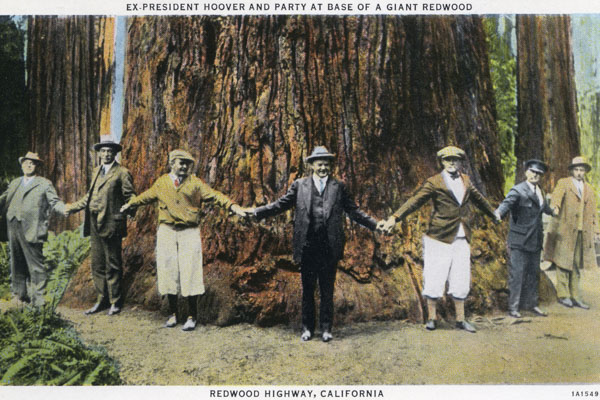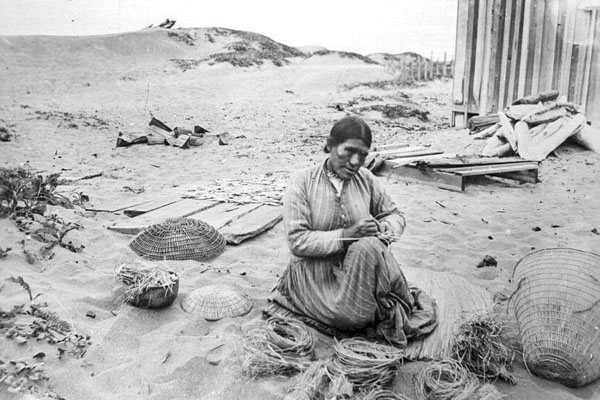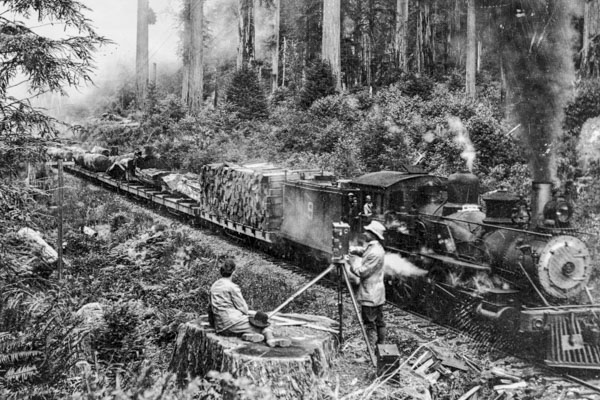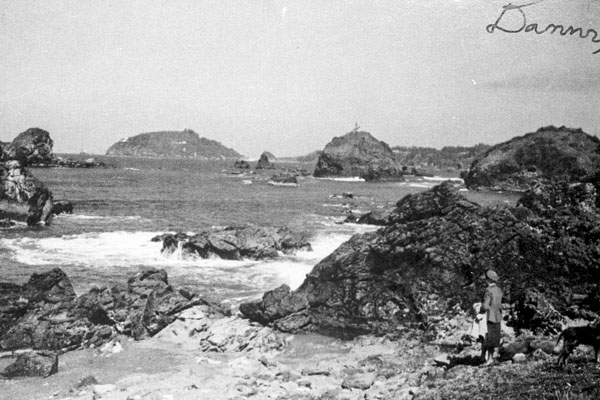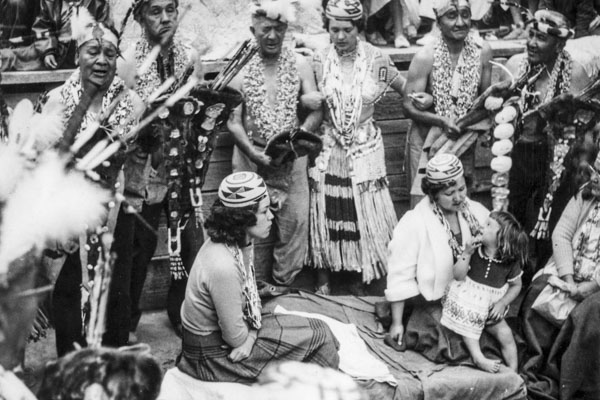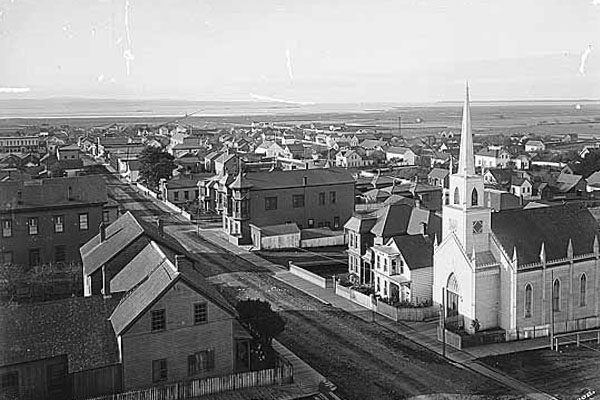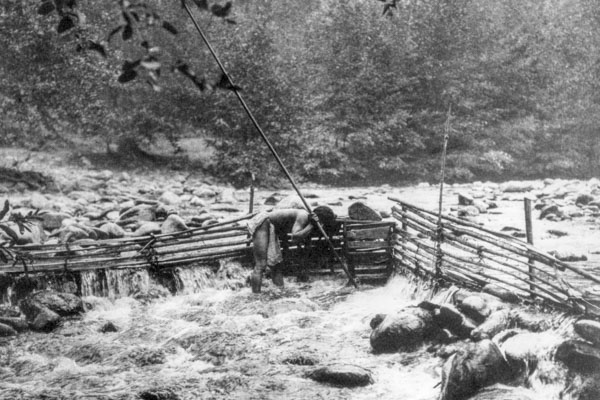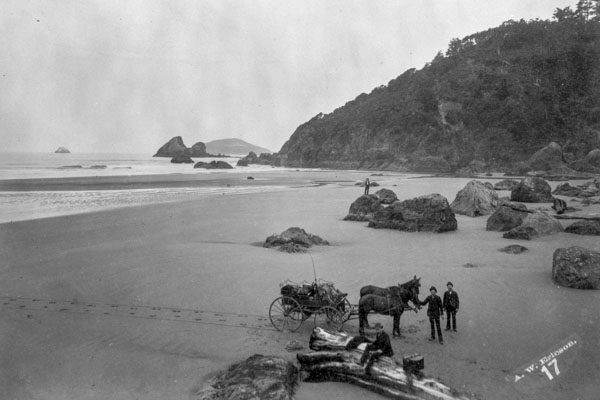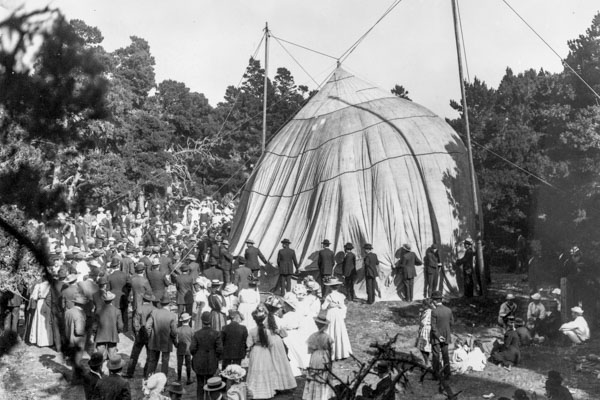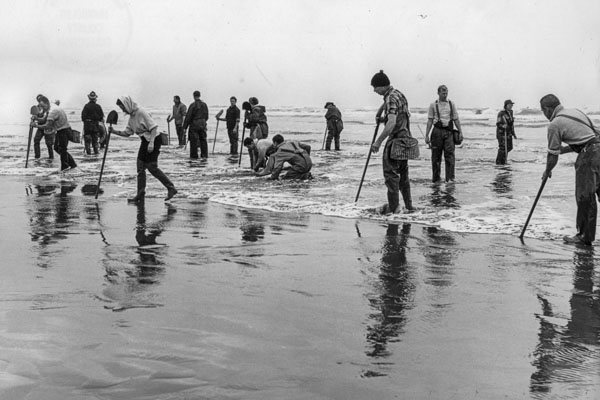You are here
Digitizing Katie Boyle: Processing Notes
Digitizing Katie Boyle: Processing Notes, Compiled by Rebekka Knierim, January – March 2009, during the course of data transcription from Katie’s Notebooks into the HSU Humboldt Room Photograph database.
The introductions to each collection and, and in some cases, an individual series within a collection, were copied separately onto a Word Document that will be included in the digitization project, as they provide contexts for each collection as well as very useful additional information.
Most of the series have a particular theme. In most cases, especially if the photos are Katie or Bill Boyle originals, she will indicate the “title” of the series on the negatives sheet.
Katie also sometimes included additional information toward the end of a series or within the descriptive notes (i.e. the 7 page description of railroad logging in the George Lennon series, or the obituaries in the Milton and Edith Hunter series). These are added to the introductory information for each series as well.
Subjects. Subjects added to the HSU Photograph database: Little River Valley, Bulwinkle, Agriculture, Hammond Lumber Company, Little River Redwood Company, Louisiana Pacific Corporation, Georgia Pacific Corporation, Equipment (used only when “lumbering” is also used), Tree felling, Camps (used only when “lumbering” is also used), Northwestern Pacific Railroad, Westhaven, Libraries, Dry Lagoon, Whales, Moonstone Heights
In some cases, I added subjects from the HSU list that Katie did not include but were relevant to the individual photo. I then added these subjects in Katie’s notes. For example, I add “people” in class photos, “roads” to photos of Hwy 36, Hwy 101, “airplanes” and “airports” to the arrival of Airforce One to McKinleyville, etc.
Some of Katie’s subjects (i.e. logging equipment, railroad logging, Trinidad people, entertainment, etc.) already had similarly worded subjects in the HSU subject list. I used the relevant subjects from the HSU subject list, and re-wrote them in Katie’s notes. The above mentioned “Katie subjects” thus became respectively: lumbering, equipment (used only when lumbering is included in the subject list for a particular photo), railroads, Trinidad, people, and music (where relevant) to give some examples.
We have lumped portraits of people and photos with people in them into the subject of “people.” We do not use “portraits.”
As the bulk of Katie’s photographs are of Trinidad and the immediate surrounding area, many of her subjects are relevant to Trinidad only, such as Trinidad Head, Tsurai, etc. We have kept Trinidad place names to simply “Trinidad.”
Another large segment of this collection is made up of logging photos so, like Trinidad, she diversifies her subject headings more than we would. For example, where she uses “logging trucks,” “hand tools,” etc., we lump those into the subject “equipment.
Katie took multiple shots of many pictures in order to get the best copy.
In most cases, TMS printed the best one. This wasn’t always the case, however, and in some cases prints were not made at all. Therefore, it was necessary for me to look at the negatives in order to discern the best ones to digitize.
In Katie’s notes she includes the numbers of negatives that are taken of the same photo. I circle the one that will be digitized.
In a few cases, it appears that Katie went back to a specific collection and re-took all the photos (i.e. Omseth, Morton, Tolley/Boyle, and Smith). She did not specify that she had done this in her notes, and often did not write that duplicates of pictures were in other filmstrips. So I went through and chose the best negatives and indicated in her notes the ones that were duplicates if she hadn’t done so already.
Editing Katie.
In many cases, her notes differed for duplicate photos. This was difficult, as combining the two kept us from being true to her word for word. However, in many cases this was the only way to wholly get across the information she presented, so slight editorial work was done in these cases, and are noted in the “Internal Notes” section of the digitized entries as well as in her notebook.I corrected any spelling or grammatical errors so long as it did not deviate from the content of her notes. I did not make notes of these corrections, as I thought it was unnecessary to bring attention to minor mistakes.
In many cases, notes that accompanied lower quality duplicate copies were better or more complete. I use the notes and the Boyle number in the entry form, but indicate in the “Internal Notes” section that another copy is the one that ought to be digitized.
The first part of series 6628BYK1 descriptions did not match the negative numbers and had to be carefully looked at and rearranged for the descriptions and negatives to coincide. This was a major editorial job on my part and I hope that I matched them correctly.
Occasionally we opted to not include some particular photos if the subject was redundant or exhaustive. A perfect example of this is Bill Boyle’s photos of elk (6913BYB1) – I chose 4 out of the 9 to digitize.
Only Katie’s notes were included in the “Notes” section of the entry form. Anyone else’s notes or comments were placed elsewhere, either “Title by other,” “Comments,” or “Notes on verso.”
Sometimes the distinction between her title and her notes was clouded. She typically underlined her “titles,” but they were often the first part of a sentence, so the entire sentence was usually used for a title.
I made indications of where I separated a title from notes in each of her notebook entries by drawing a slash between the last word of a title and, if applicable, the first word of the “notes.”
She includes photographers’ names and dates in her notes; I do not put these in the “notes” section but rather in the “Photographer” and “Dates” boxes on the entry form.
Notes on the back of copy prints developed for Trinidad Museum Society that differentiated from or added to Katie’s notes were included in the “Notes on verso” box. These writings are on nearly every print in Part One, are reduced considerably in Part Two, and nil in Part Three
The Notes on Verso were written mostly by Katie Boyle and Carolyn Eisner. If someone else writes on verso, it is indicated in the Notes on Verso box on the data entry page.
Photos of documents and maps are not to be included in this digitization project.
Comments or observations made by others are put in the “Comments” section.
For the most part the comments come from Ned Simmons or Rebekka Knierim. Our comments are followed by /NS or /RK
Some additional information is included in the comments section due to the visibility on many negatives (in the Lois Smith and Alice Spinas series, namely) of labels beneath the photographs that Katie was taking pictures of. In these cases, after the comments one will see a /LS or /AS for Lois Smith or Alice Spinas. (See below)
Others who contributed to comments made for this collection, either through discovered notes or word of mouth, are Roberta Lindgren (/RL), Wilda Lindgren (/WL), Patti Spears (/PS), Joan Berman (/JB), and Carolyn Eisner (/CE). Carolyn Eisner is also the main contributor to the “Notes on Verso,” although she is not credited with this in that particular box.
Often Katie will include several different negatives under one heading or description to show either different views of something or a chain of events. If so, this is indicated in the Comments section as “1st in a series of 4 photographs” or “3rd of 5 photos.”
Parts Two and Three contained many “I.D. tag” negatives – a picture taken of a handwritten label, most likely written by Katie, to indicate the upcoming photo or photos. For the most part these were included in her notes; but if they weren’t and the information was useful, it was placed in the “Comments” section.
For the Lois Smith collection, a large, unique collection of photos taken from her personal family album, many shots included descriptions made by Lois Smith herself written below the photos which she had placed in her albums. Her albums, now at the Humboldt County Historical Society, have been taken apart for classification and better preservation. Therefore, it is beneficial to include Lois’s descriptions in this digitization of the Katie Boyle collection. These are included in the “Comments” section of the data entries.
As this project is affiliated with Trinidad Museum Society and all of the prints were made by Trinidad Museum Society, I indicate “No TMS print” in the “Internal Notes” section if I could not find a particular print in their collection.
Part One has 647 entries, and Part Two has 385 entries. Therefore, we have 1,032 negative entries on the database. Part Three contains about 1,800 negatives, but as described below, this number will likely change.
Part Three: A Whole New Ballgame
Part three contains two major aspects:- Contemporary originals that Katie and Bill Boyle took of Trinidad area events, scenery, etc., as well as many shots of places where they knew older photographs had been taken, and they wished to show their changes over time.
- Others’ collections, which include in this particular set mostly private Native American artifact collections (taken by Katie) and old postcards and portraits. These two types of photos are in many ways unique to this set of negatives.
New issues to confront: avoiding redundancy and adding clarification
- A significant portion of the negatives have no coinciding notes or descriptions. For this we will have to use our own descriptions and consult with others who may have more information about the photographs. In most cases, prints were made by Trinidad Museum Society, but in several cases prints were not made for entire series; consequently a close look at the negatives will be in order.
- The bulk of the Part 3 notes are what is now considered “Katie’s scribble.” For the most part she no longer uses her own subject headings. She often gives brief titles but offers little to no details about the photos. Therefore, we will be approaching the metadata aspect of this differently, perhaps in some ways by incorporating more of our own wording in the database entries or including additional information we can ascertain about the photos.
- Many of the negatives in Part 3 are either identical or very nearly so to previous negatives we have already entered into the system. This will require, again, a close look at the negatives and available prints to determine what we may be able to leave out. Although it will take some extra time, the benefit will be a great reduction in repetitive images.
We are extremely selective in the negatives we choose for digitization. Several collections of photographs were eliminated for digitization, which are listed here:
- 7308BYWK: Trinidad school and students between 1950-1970
- 8004BYK4: Native American artifacts that have been digitized elsewhere; we think they are from the Joy Sundberg collection; a few are featured in the book Her Mind Made Up by Ron Johnson.
- 8205BYK1: copies of old postcards; none were done except for two
- 8207BYK4 & 5: a house under construction, parking lot full of trucks, a mill area with scrap wood burners. No notes or provenance.
- 8520HY3: photos from the monthly Hammond Lumber Co. publication, “Redwood Log”
- 8801LG1: I am not certain who the owner of this collection is, but the photos are random – photos from a Brizzard book of two women, and a Native American structure. No notes, obscure details in the negatives themselves, no context.
- 9003TR1: This collection has a few random mill photos, as well as the train photo from the first Jack Trego collection. There is no contextual information for any of these images.
- 9004HC1: These photos are likely of Clarence Heberlee, the owner of one of the Trinidad smokehouses, but they are not indicated as such and therefore the information for this digitization would be purely speculative.
- 9006BYK1: Katie Boyle’s Ericson postcard collection. These have been reproduced by HSU already, in their own Ericson collection.
Katie Boyle had a collection of black and white copies of slides of Northwestern Native Americans (Series 8601BYK1 – 8708BYK14). Out of the approximately 500 negatives - most of which had no context, were duplicates, or thematically repetitive - we chose 35 negatives to digitize.
I have had to be creative in other ways as well; i.e. adding a new series, 7602BYB2, to make amends for repetitive negative numbers on the 7601BYB1 negative sheet.
We have discovered that what we thought were numbers to indicate the years that she took photographs (i.e. 7601BYB1 means that she took the photographs in 1976) are not always accurate. (e.g., Fort Humboldt photos, Trinidad Dock photos)
Future directions
We are gleaning new information from a display created by Katie Boyle of her photos that has, until now, been in the attic of the Trinidad Museum Society. These may be later added to the information on the database. They include a multitude of names of people in her photos that were, to that point, unknown; as well as statements and facts about events and other things that may be useful information for this digitization project.While it was possible that we were going to do the digitizing here at HSU, we have discovered it to be less time consuming to send it off to Northern Micrographics.
- This will allow all of the negatives (or most; some pages will be left behind as they were collections that we are not digitizing) to be scanned and viewed on the computer where the best, clearest images will be easier to spot and thus enter into the database.
- We will have a digital library of the Katie Boyle collection, so that images that we decided not to scan will be available anyway for possible future use.
Katie appears to have been a collector of images with the very strong intention of letting these photos and information be available to the public for the purpose of filling in gaps of historical knowledge. We hope that this project will be a continuation of this idea.
